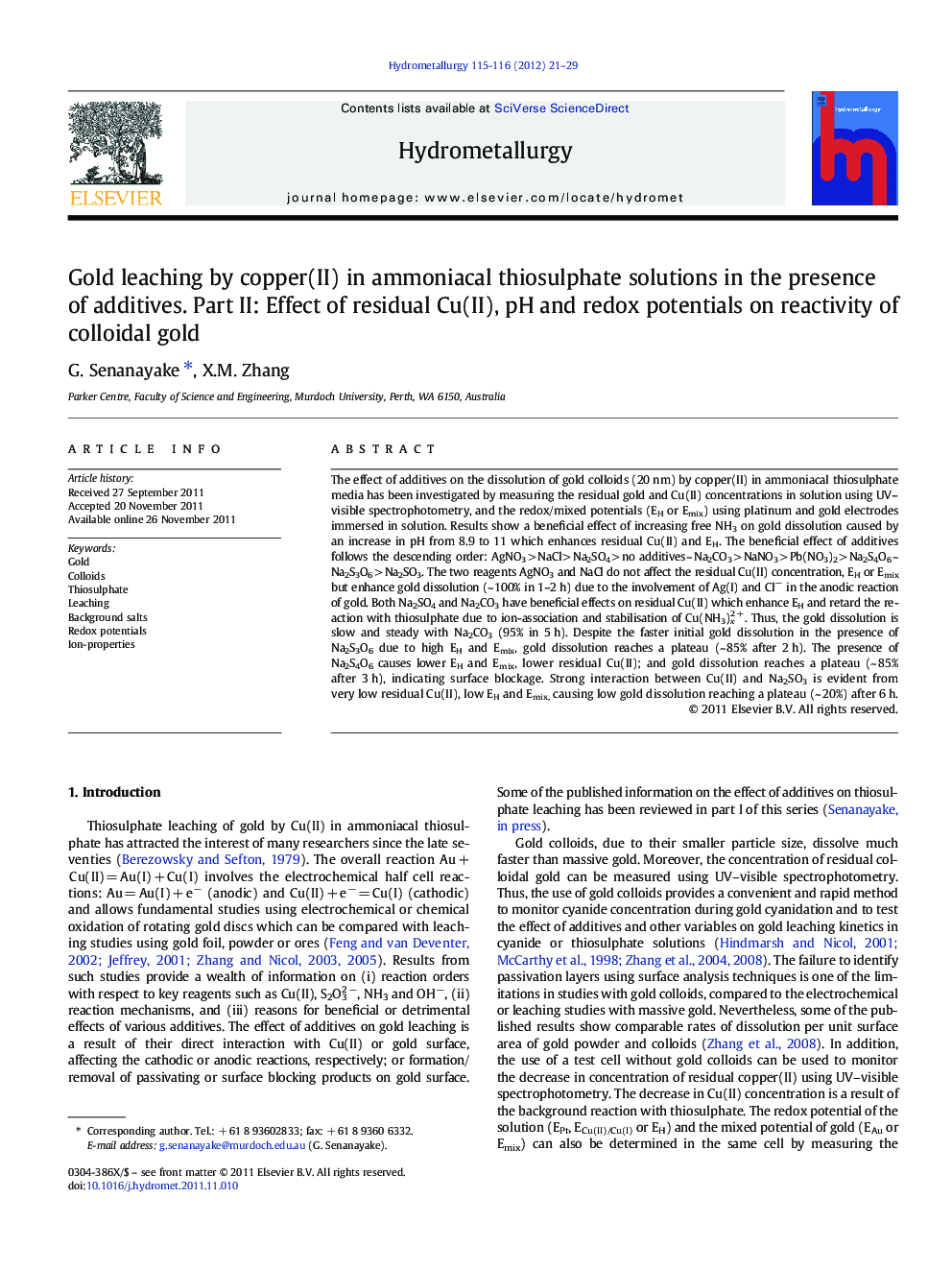| کد مقاله | کد نشریه | سال انتشار | مقاله انگلیسی | نسخه تمام متن |
|---|---|---|---|---|
| 212555 | 462055 | 2012 | 9 صفحه PDF | دانلود رایگان |

The effect of additives on the dissolution of gold colloids (20 nm) by copper(II) in ammoniacal thiosulphate media has been investigated by measuring the residual gold and Cu(II) concentrations in solution using UV–visible spectrophotometry, and the redox/mixed potentials (EH or Emix) using platinum and gold electrodes immersed in solution. Results show a beneficial effect of increasing free NH3 on gold dissolution caused by an increase in pH from 8.9 to 11 which enhances residual Cu(II) and EH. The beneficial effect of additives follows the descending order: AgNO3 > NaCl > Na2SO4 > no additives ~ Na2CO3 > NaNO3 > Pb(NO3)2 > Na2S4O6 ~ Na2S3O6 > Na2SO3. The two reagents AgNO3 and NaCl do not affect the residual Cu(II) concentration, EH or Emix but enhance gold dissolution (~ 100% in 1–2 h) due to the involvement of Ag(I) and Cl− in the anodic reaction of gold. Both Na2SO4 and Na2CO3 have beneficial effects on residual Cu(II) which enhance EH and retard the reaction with thiosulphate due to ion-association and stabilisation of Cu(NH3)x2 +. Thus, the gold dissolution is slow and steady with Na2CO3 (95% in 5 h). Despite the faster initial gold dissolution in the presence of Na2S3O6 due to high EH and Emix, gold dissolution reaches a plateau (~ 85% after 2 h). The presence of Na2S4O6 causes lower EH and Emix, lower residual Cu(II); and gold dissolution reaches a plateau (~ 85% after 3 h), indicating surface blockage. Strong interaction between Cu(II) and Na2SO3 is evident from very low residual Cu(II), low EH and Emix, causing low gold dissolution reaching a plateau (~ 20%) after 6 h.
Figure optionsDownload as PowerPoint slideHighlights
► Ag(I) and Cl– enhance gold dissolution without affecting residual Cu(II).
► CO32- enhance residual Cu(II) causing slow but steady gold dissolution (95% in 5 h).
► Sulphite and tetra/trithionate cause low residual Cu(II) and surface blockage.
► Effect on gold dissolution: Ag(I)>Cl-> SO42-> NO3-~ none>Pb(II)>S4O62-~ S3O62- > SO32-.
Journal: Hydrometallurgy - Volumes 115–116, March 2012, Pages 21–29